
Research Summary
Ethical governance of artificial intelligence is a core issue for ensuring the healthy development of the technology. With the deep integration of medical AI in areas such as disease diagnosis and treatment planning, the ethical challenges it raises—including data privacy, algorithmic fairness, and safety/trustworthiness—have become increasingly prominent. These challenges are crucial for both the successful implementation of the technology and for building trust between doctors and patients. In response, China has explicitly called for the development of "responsible artificial intelligence" in key policy documents like the Ethical Norms for the New Generation Artificial Intelligence, and is committed to building acomprehensive ethical governance framework covering the entire AI lifecycle.
In response to these national and industrial needs, the research team, in collaboration with domestic and international universities and research institutions, has leveraged interdisciplinary strengths to long-term tackle these issues and provide privacy-ethics related solutions for smart healthcare. They developed the "Digital Mask" technology for protecting patient privacy in ocular and facial images (Nature Medicine, 2022) and created a clinical research data management framework based on "AI-Blockchain" technology, equipping multi-center research data with a "Digital Shield" (Science Bulletin, 2025).
While advancing these practical solutions, the team identified two key bottlenecks in current medical AI ethics research:
First, "unclear patterns"—a lack of systematic, quantitative analysis methods makes it difficult to understand how ethical issues evolve over time, what the current strategies for addressing them are, and how they might develop in the future.
Second, "an insufficient governance toolkit"—existing guidelines and reviews often remain at the level of theoretical discussions, lacking precise, actionable ethical guidance tailored to different data modalities and application scenarios. This often leads to a "one-size-fits-all" approach in practice, which struggles to address complex real-world challenges.
Ophthalmology, as a typical field characterized by data-intensive practices and mature AI application, serves as an ideal starting point for exploring medical AI ethics governance. Using bibliometric methods, the research team systematically "decoded" the development pathways, current hotspots, and key solution strategies in the field of ophthalmic AI ethics. Using ophthalmology—a pioneering field in AI application—as a demonstration, they provided a theoretical framework for the quantitative analysis of medical AI ethics and constructed a scalable ethical governance framework. This offers a refined, operable "Ethical Compass" for clinical practice, technology development, and policy formulation. The research was published in NPJ Digital Medicine in October 2025 under the title "Current status and solutions for AI ethics in ophthalmology: a bibliometric analysis."
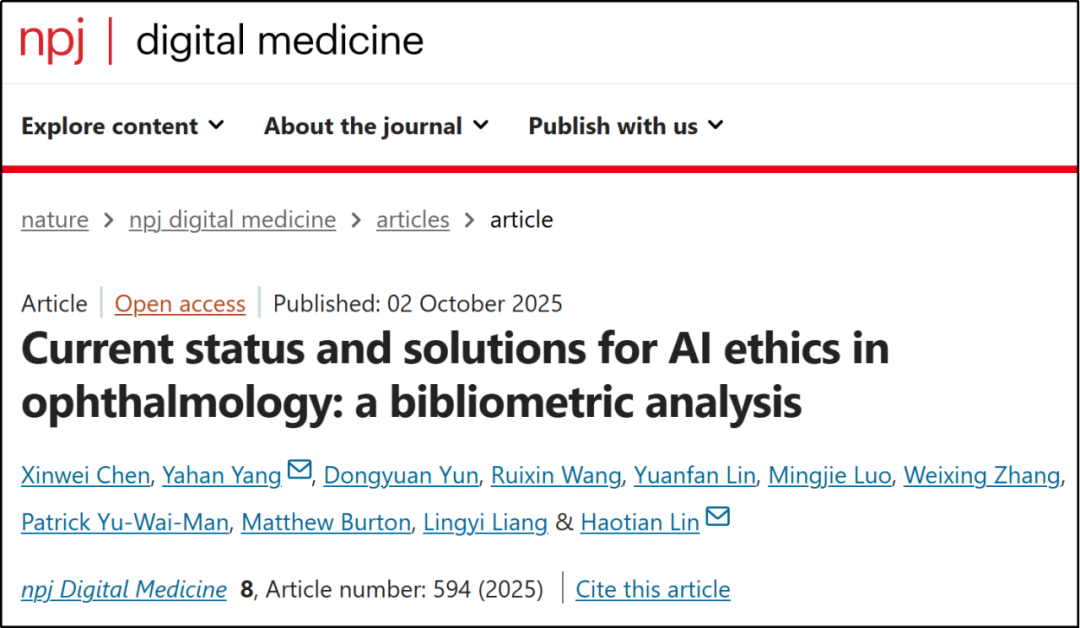
Research Content
Ophthalmology is a "Pioneer" in Medical AI Ethics
In the field of medical AI ethics, ophthalmology ranks second in terms of both the number and growth rate of publications, only behind oncology, establishing it as a "pioneering exemplar" in this field.
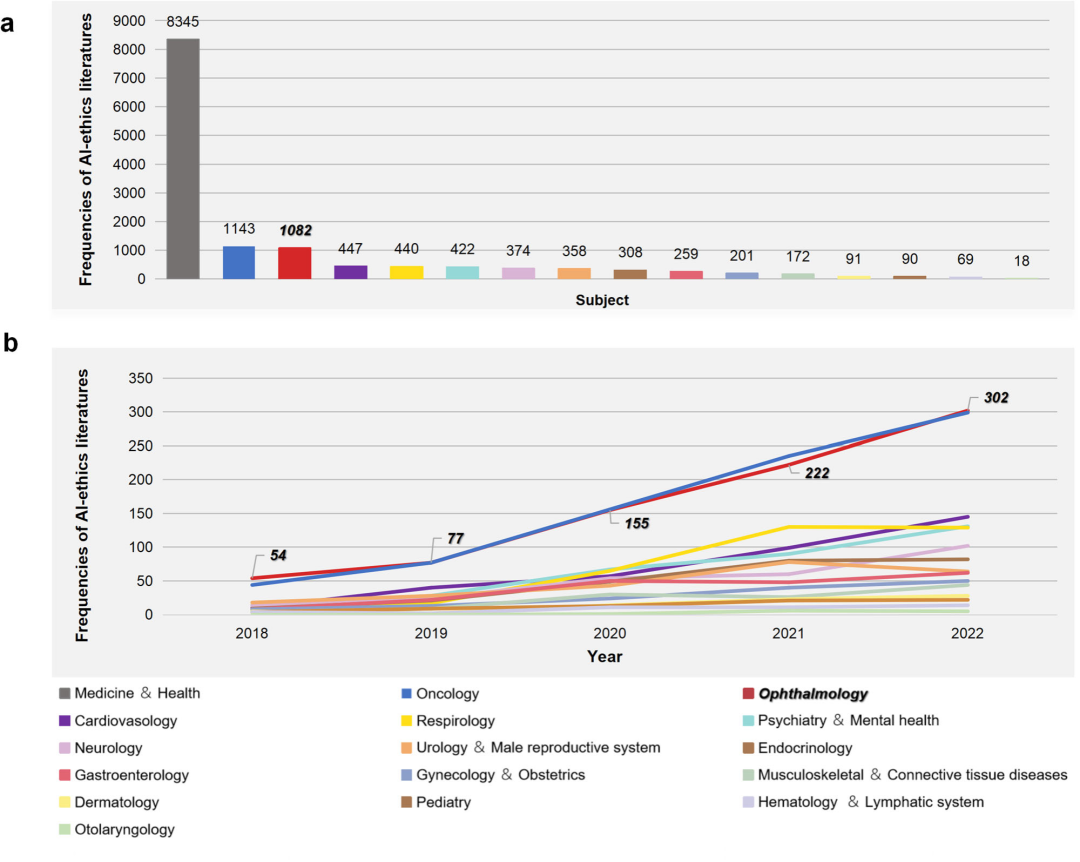
Hotspots in Ophthalmic AI Ethics Evolve Dynamically with Technological Iteration, Privacy and Security Recently Become Core Focus
Around 2018, as ophthalmic AI initially entered clinical practice, concerns primarily centered on trustworthiness and reliability ("can it be used?") due to its direct impact on vision-related diagnoses. From 2019-2020, with the expanding implementation of AI, its "black box" nature and performance variations across different populations brought transparency and fairness to the forefront. Since 2021, with the proliferation of multi-center data sharing and the ease of identifying individuals from eye images, privacy and data security have become the focal point.
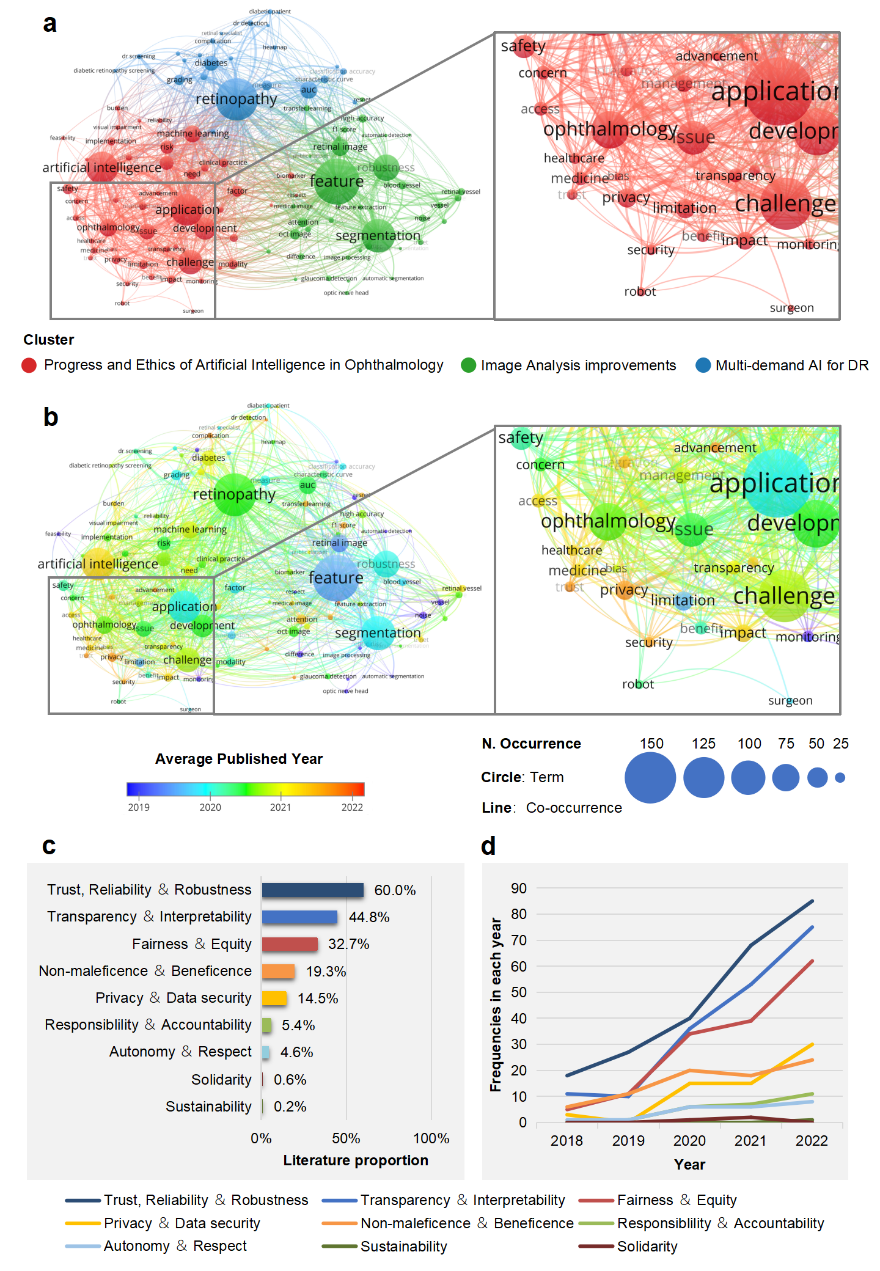
Data Modality Characteristics Determine Ethical Priorities
AI models using external eye or facial photographs, which contain personally identifiable information, place greater emphasis on privacy. Those using fundus images or OCT, often encompassing diverse populations and multiple diseases, focus more on transparency and fairness. For AI based on surgical videos, given the precision of ophthalmic surgery, the principles of safety and "beneficence and non-maleficence" are prioritized.
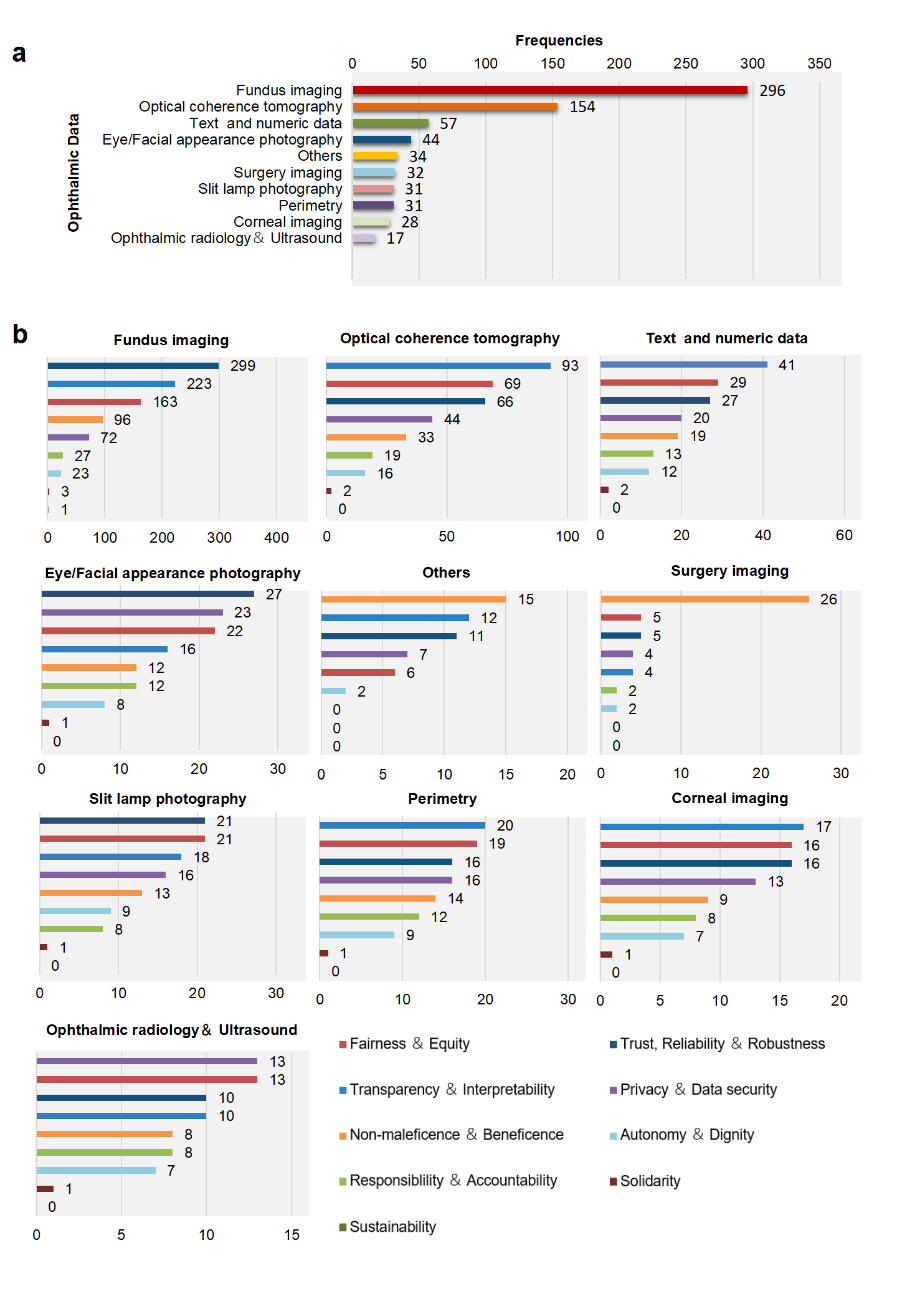
A Dual Focus on Technology and Regulation is an Emerging Trend in Ethics Governance
Currently, technological solutions are the primary strategy for addressing ethical issues in ophthalmic AI. However, a dual-pronged strategy combining "Technology + Regulation" is emerging as a significant trend.
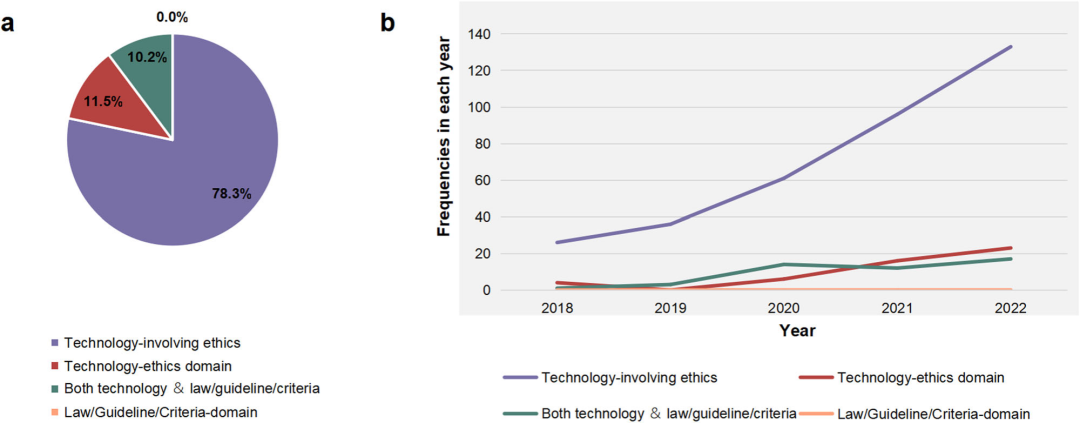
Addressing the critical issue of the lack of quantitative basis for medical AI ethics governance, this study, through systematic bibliometric analysis, has established the first quantifiable and scalable ethical governance assessment framework. It not only provides an empirical foundation for the standardized development of ophthalmic AI but also offers a scientific model for implementing national AI governance strategies across the entire medical field, holding significant practical value for promoting the healthy and orderly development of the medical AI industry.
Research Team
This research was completed by a team led by Professor Lin Haotian from Zhongshan Ophthalmic Center of Sun Yat-sen University / State Key Laboratory of Ophthalmology, in collaboration with Professor Liang Lingyi, Professor Patrick Yu-Wai-Man from the University of Cambridge, Professor Matthew Burton from the International Centre for Eye Health, London School of Hygiene & Tropical Medicine, among others. Zhongshan Ophthalmic Center of Sun Yat-sen University / State Key Laboratory of Ophthalmology is the primary affiliation. Professor Lin Haotian and Associate Research Fellow Yang Yahan from Zhongshan Ophthalmic Center are the co-corresponding authors. Master's student Chen Xinwei, Associate Research Fellow Yang Yahan, and PhD student Yun Dongyuan from Zhongshan Ophthalmic Center are the co-first authors.
Corresponding Authors

Lin Haotian
Professor
Zhongshan Ophthalmic Center, Sun Yat-sen University

Yang Yahan
Associate Research Fellow
Zhongshan Ophthalmic Center, Sun Yat-sen University
First Authors

Chen Xinwei
Master's Student
Zhongshan Ophthalmic Center, Sun Yat-sen University

Yun Dongyuan
PhD
Zhongshan Ophthalmic Center, Sun Yat-sen University
Link to Original Article











